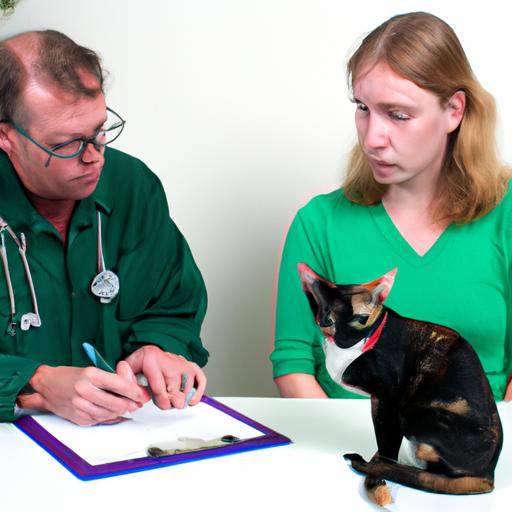In today’s fast-paced world, our pets have become cherished members of our families. We want to ensure they receive the best possible care when it comes to their health. This is where pet health insurance comes into play, providing financial security and peace of mind. However, it’s essential to understand one crucial aspect of these policies – waiting periods.
Why is pet health insurance important?
Just like humans, pets can experience unexpected health issues or accidents that require immediate attention. The cost of veterinary care can quickly add up, leaving pet owners with hefty bills. Pet health insurance serves as a safety net, helping to cover these expenses and avoid difficult financial decisions.
Understanding waiting periods in pet health insurance
Waiting periods are an integral part of pet health insurance policies. They refer to the duration of time that must pass before specific coverage becomes effective. It’s similar to a probationary period where the insurance provider ensures that the pet is in good health and not already suffering from pre-existing conditions.
During the waiting period, pet owners won’t be able to make claims for certain treatments or conditions. This waiting period allows insurance companies to maintain a balance between providing coverage for new accidents or illnesses while preventing fraudulent claims.
Now that we understand the importance of pet health insurance and the concept of waiting periods, let’s delve deeper into the different types of waiting periods commonly found in pet insurance policies. By gaining this knowledge, you’ll be better equipped to make informed decisions when choosing a policy for your beloved furry friend.
What are waiting periods in pet health insurance?

An anxious pet owner waiting for their pet’s health insurance to become active.
When it comes to pet health insurance, waiting periods are a crucial aspect that pet owners should understand. Let’s explore the definition and purpose of waiting periods, as well as the various types commonly found in pet insurance policies.
Definition and purpose of waiting periods
Waiting periods, in the context of pet health insurance, refer to the specified period of time that must elapse before certain coverage becomes effective. During this waiting period, any claims related to specific conditions or treatments will not be reimbursed by the insurance provider.
The purpose of waiting periods is to prevent pet owners from purchasing insurance only when their furry companions need immediate medical attention. Insurance companies implement waiting periods to ensure they maintain a sustainable business model and can provide coverage for new accidents or illnesses that arise after the waiting period.
Types of waiting periods commonly found in pet insurance policies
Pet insurance policies typically include different types of waiting periods. These waiting periods can vary in duration and are designed to address specific aspects of coverage. Here are some common types of waiting periods:
-
Accident waiting period: This waiting period typically applies to injuries resulting from accidents, such as broken bones or wounds. It ensures that the insurance coverage is not abused by pet owners who only seek immediate coverage after an accident occurs.
-
Illness waiting period: This waiting period focuses on coverage for illnesses, such as respiratory infections or digestive issues. It allows the insurance provider to confirm that the pet does not have any pre-existing conditions before providing coverage for illnesses.
-
Orthopedic waiting period: Orthopedic conditions, such as hip dysplasia or arthritis, often have longer waiting periods. This is because these conditions can be more prevalent in certain breeds and may require expensive treatments or surgeries.
By understanding the different types of waiting periods, pet owners can make informed decisions when selecting a pet insurance policy that aligns with their pet’s specific needs and potential health risks. In the next section, we will explore the factors that can impact waiting periods in pet health insurance.
Factors Impacting Waiting Periods

A veterinarian discussing waiting periods with a pet owner.
Waiting periods in pet health insurance can vary depending on several factors. Insurance providers take into account these factors to determine the duration of the waiting period for each individual pet. Let’s explore the key factors that can impact waiting periods:
1. Age and Breed of the Pet
The age and breed of your pet play a significant role in determining the waiting period. Generally, younger pets may have shorter waiting periods compared to older ones. This is because younger animals are considered to have fewer pre-existing conditions, making them less of a risk for the insurance company. Additionally, certain breeds may be prone to specific health issues, which might result in longer waiting periods for those conditions.
2. Pre-existing Conditions
Pre-existing conditions refer to any health issues or injuries that your pet had before obtaining insurance coverage. Insurance providers typically exclude coverage for these pre-existing conditions during the waiting period. It’s crucial to disclose all known pre-existing conditions when applying for pet insurance to ensure transparency and avoid any potential coverage issues later on.
3. Coverage Options Chosen
Different coverage options within a pet insurance policy can impact waiting periods. Some policies may have separate waiting periods for different types of treatments or conditions. For example, a policy might have a shorter waiting period for accidents and injuries but a longer waiting period for illnesses. It’s essential to carefully review the coverage options and waiting periods offered by different insurance providers to choose the policy that best suits your pet’s needs.
By considering these factors, you can better understand how waiting periods are determined in pet health insurance. It is essential to choose a policy that aligns with your pet’s specific circumstances, ensuring the waiting periods are reasonable and suitable for their age, breed, and existing health conditions.
Understanding the Duration of Waiting Periods
Waiting periods play a crucial role in pet health insurance, and understanding their duration is essential for pet owners. Let’s explore the typical waiting periods for different conditions and treatments, as well as the variations that exist among different insurance providers.
Typical waiting periods for different conditions and treatments
The duration of waiting periods can vary depending on the specific condition or treatment. Generally, waiting periods for accidents and injuries tend to be shorter compared to those for illnesses. This is because accidents are often unforeseen and require immediate attention.
For common conditions such as ear infections or allergies, waiting periods typically range from 14 to 30 days. However, more serious conditions like cancer or orthopedic surgeries may have longer waiting periods, usually ranging from 6 to 12 months. It’s important to carefully review the waiting periods associated with specific conditions to ensure you choose a policy that aligns with your pet’s needs.
Variations in waiting periods among different insurance providers
It’s worth noting that waiting periods can vary among different pet insurance providers. While some providers may have standard waiting periods for specific conditions, others may offer shorter or longer waiting periods based on their coverage options.
Before selecting a pet insurance policy, it’s crucial to compare waiting periods offered by different providers. Look for providers that offer shorter waiting periods, especially if you have a pet with pre-existing conditions or are concerned about potential health issues. Remember, shorter waiting periods can provide faster access to coverage and peace of mind.
By understanding the duration of waiting periods and the variations among different insurance providers, you can make an informed decision that aligns with your pet’s healthcare needs. It’s essential to carefully review the terms and conditions of each policy to ensure you choose the best coverage for your furry companion.
Tips for Managing Waiting Periods Effectively
Waiting periods can sometimes feel like a hurdle in getting immediate coverage for your pet’s health needs. However, there are several strategies you can employ to manage waiting periods effectively and ensure your pet receives the care they need. Let’s explore some valuable tips:
5.1 Preparing Ahead for Potential Health Issues
It’s always better to be proactive when it comes to your pet’s health. Before acquiring pet insurance, consider scheduling a comprehensive veterinary check-up. This will help identify any pre-existing conditions that may affect the waiting period. Additionally, maintaining a healthy lifestyle for your pet through regular exercise and a balanced diet can reduce the risk of future health issues.
5.2 Considering Coverage Options with Shorter Waiting Periods
Not all pet insurance policies have the same waiting periods. When selecting a policy, carefully review the waiting periods associated with different conditions and treatments. Some insurance providers offer policies with shorter waiting periods for specific services or may even waive waiting periods for certain conditions. By comparing different policies, you can find options that align with your pet’s needs and minimize the waiting period.
5.3 Seeking Alternative Sources of Financial Assistance during Waiting Periods
While you navigate through the waiting period, there are alternative ways to manage the cost of your pet’s healthcare. Research local animal welfare organizations, veterinary assistance programs, or even crowdfunding platforms dedicated to pet healthcare. These resources can provide temporary financial aid during the waiting period, ensuring your pet receives the necessary care without delay.
Remember, waiting periods are a temporary aspect of pet health insurance, aimed at ensuring the integrity of the system. By employing these tips, you can effectively manage waiting periods while still providing the best possible care for your furry companion.
Conclusion
In conclusion, when it comes to pet health insurance, understanding waiting periods is crucial. These waiting periods are designed to protect both the pet owner and the insurance provider, ensuring that coverage is provided for new accidents or illnesses, while also preventing fraudulent claims.
By being aware of waiting periods, pet owners can plan ahead and make informed decisions regarding their pet’s healthcare. It is essential to consider factors such as the pet’s age, breed, and pre-existing conditions when choosing a policy. Additionally, exploring coverage options with shorter waiting periods can help minimize the waiting time for necessary treatments.
While waiting periods can be frustrating, it’s important to remember that they serve a purpose in maintaining the integrity of pet health insurance policies. During these waiting periods, pet owners can take proactive steps to prepare for potential health issues and seek alternative sources of financial assistance if needed.
In summary, pet health insurance is a valuable investment that provides financial security and peace of mind. Understanding waiting periods ensures that you make the most informed decisions for your pet’s healthcare needs. So, take the time to research and compare policies, consider waiting periods, and choose the best pet health insurance coverage that aligns with your furry friend’s needs. Your pet’s health and well-being deserve the best protection possible.
